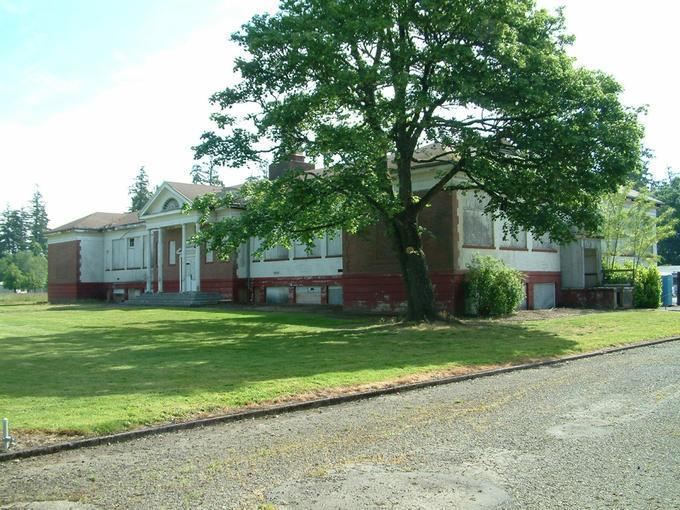Children's Farm Home School (Corvallis, Oregon)
- Title
-
Children's Farm Home School (Corvallis, Oregon)
- LC Subject
-
Architecture, American
Architecture--United States
- Creator
-
DeYoung & Roald
Roald, Knud A.
DeYoung, James W.
Travler, L. N.
- Photographer
-
Liz Carter
- Creator Display
-
DeYoung & Roald (architecture firm, 1920-1930)
James W. DeYoung (architect, 1885-1968)
Knud A. Roald (architect, 1878-1965)
L. N. Travler (builder/contractor)
- Description
-
National Register of Historic Places
- View
-
exterior: west (front) and south (side) elevations. View looking northeast
- Provenance
-
Design Library, University of Oregon Libraries
- Temporal
-
1920-1929
- Style Period
-
Georgian Revival
- Work Type
-
architecture (object genre)
built works
views (visual works)
exterior views
private schools (buildings)
- Latitude
-
44.608437
- Longitude
-
-123.214437
- Location
-
Benton County >> Oregon >> United States
Oregon >> United States
United States
Corvallis >> Benton County >> Oregon >> United States
- Street Address
-
4455 Highway 20 Northeast
- Date
-
1925
- View Date
-
2007
- Identifier
-
pna_30130.jpg
- Rights
-
In Copyright - Educational Use Permitted
- Rights Holder
-
Oregon State Historic Preservation Office
- Source
-
Oregon State Historic Preservation Office
- Type
-
Image
- Format
-
image/jpeg
- Set
-
Building Oregon
- Primary Set
-
Building Oregon
- Institution
-
University of Oregon
- Citation
-
National Register of Historic Places Registration Form
- Note
-
From the National Register nomination, Conclusion: 'The Children's Farm Home School has a significant place in the twentieth century social welfare history of Oregon. It exemplifies the educational efforts undertaken by the Women's Christian Temperance Union as part of their program for providing welfare services for homeless children. The building served as the focal point not only for educational services and vocation training, but for social activities on the campus as well. The development of the Children's Farm Home was the most notable project undertaken by the Oregon WCTU. The facility was conceived, developed, financed (by their fundraising efforts), and managed by the WCTU for 40 years. During this time, more than 3,500 children benefited from the services provided by the facility, including the school building. The Children's Farm Home is one of only a few residential facilities that were developed in Oregon during the early twentieth century to address the needs of homeless children and the only one that was intended to provide a "home environment" for children of all ages throughout their childhoods (there was no expectation that the children should be adopted). It was also the only institution that provided an educational facility on campus. The Albertina Kerr Nursery in Portland (listed on the National Register in 1979) was developed in 1921 to care for abandoned infants, infants of unwed mothers, and infants who required care while their mothers worked to support their family. It was an outgrowth of the pioneering social work of the Pacific Coast Rescue and Protective Society, but provided services only for children to the age of three. The St. Agnes Foundling Asylum, near Oregon City, provided shelter for children to the age of seven who were awaiting adoption. The Christie Home for Orphan Girls was located near Portland, but offered residential services only to girls between the ages of 6 and 16. The Oregon Masonic association built a "Children's Cottage" in 1926 on the site of the new Grand Lodge in Forest Grove, intended to house orphans of Masons, but closed in 1928 due to problems with providing for the needs of the children. The Children's Farm Home School, which retains a high degree of historic integrity, has come to symbolize the work of the WCTU and the Children's Farm Home. '
This image was included in the documentation to support a nomination to the National Register of Historic Places, a program of the National Park Service. The image is provided here by the Oregon State Historic Preservation Office and the University of Oregon Libraries to facilitate scholarship, research, and teaching. Please credit the Oregon State Historic Preservation Office when using this image. For other uses, such as publication, contact the State Historic Preservation Office.
